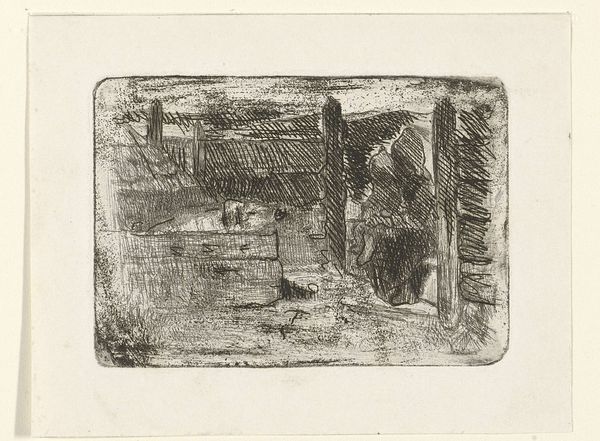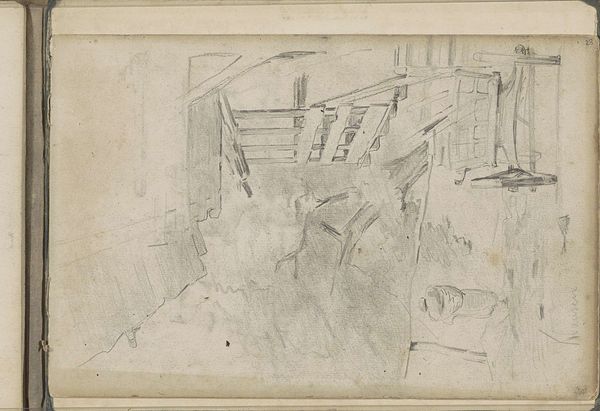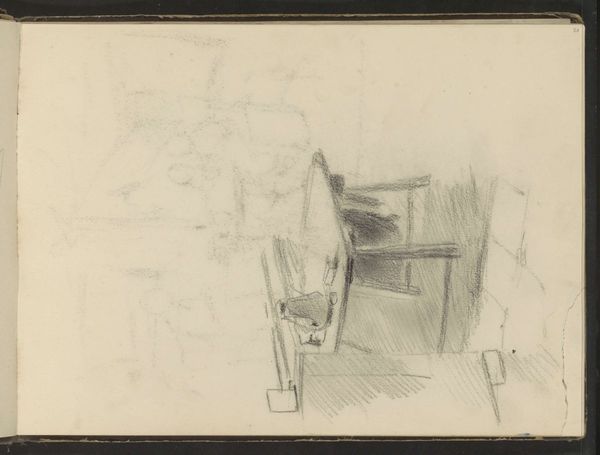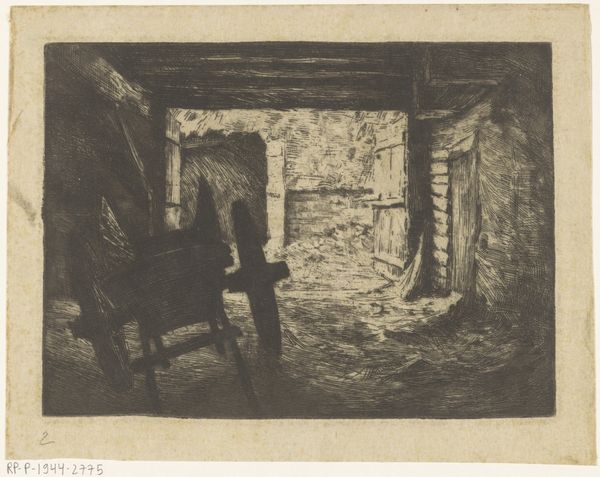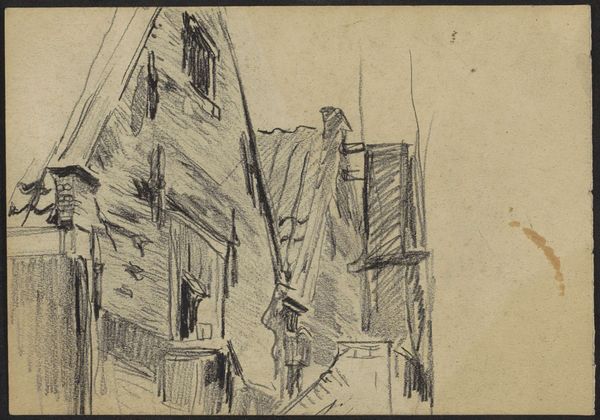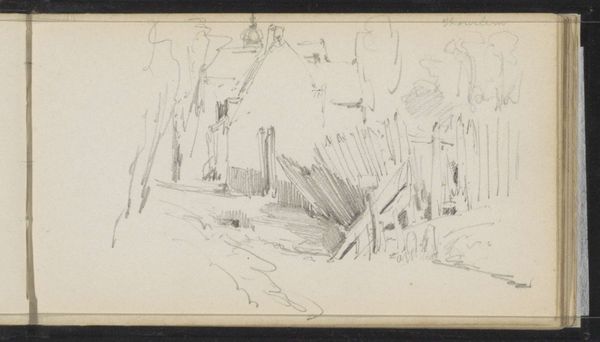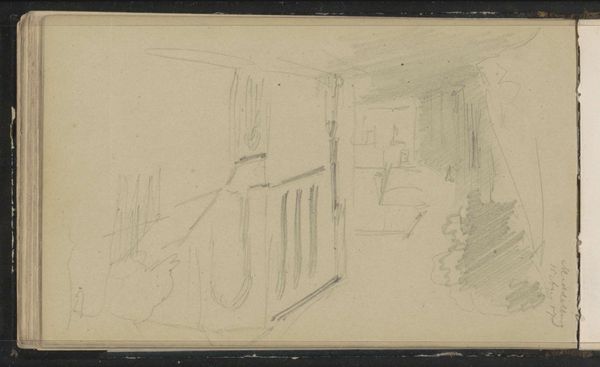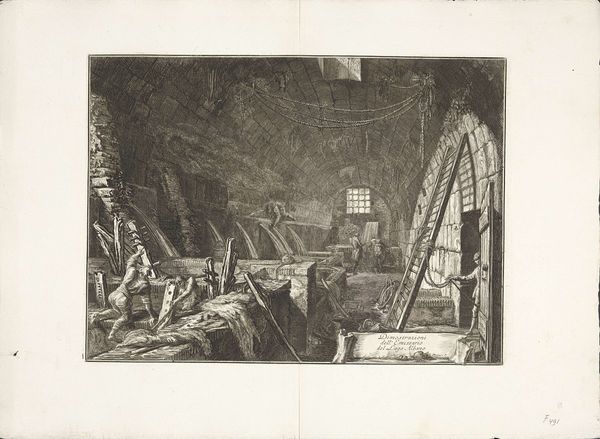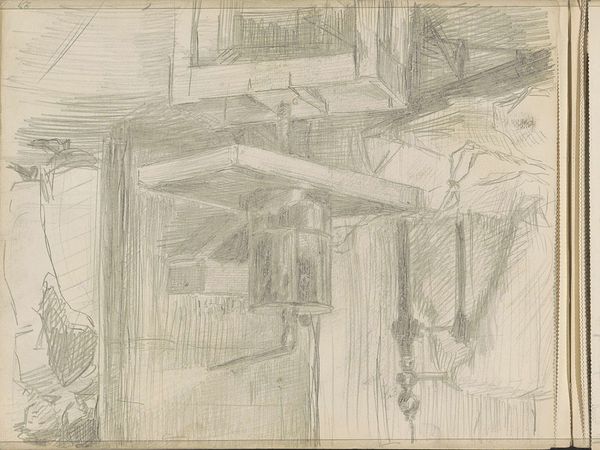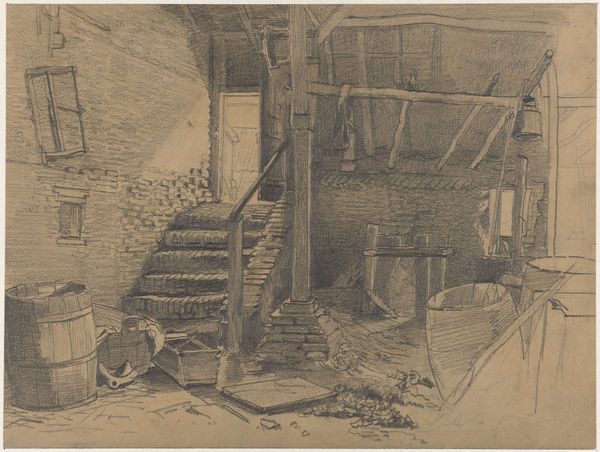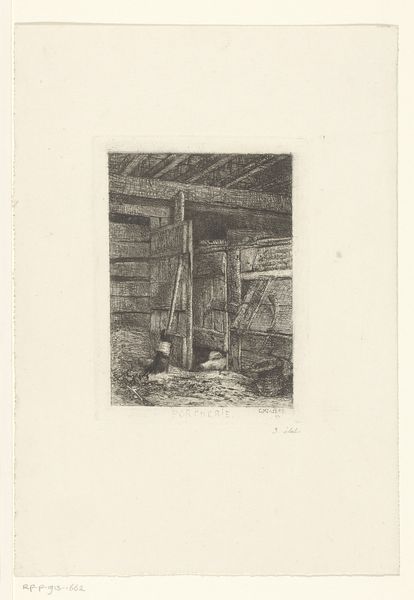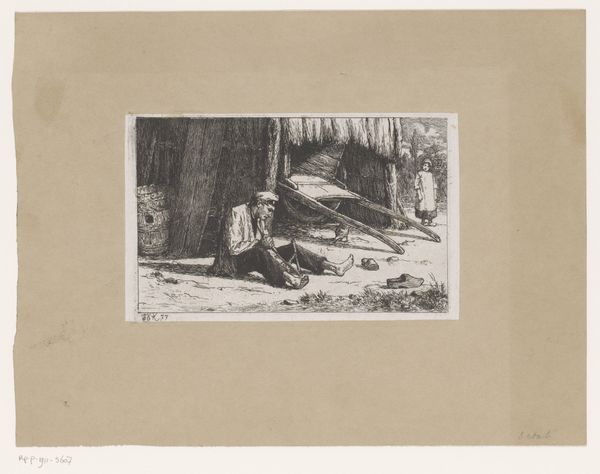
drawing, pencil
#
drawing
#
landscape
#
mountain
#
pencil
#
realism
Dimensions: height 225 mm, width 295 mm
Copyright: Rijks Museum: Open Domain
Editor: This drawing, "Huis aan de voet van een berg te Klausen in Tirol" by Willem Cornelis Rip, dates from around 1874-1878. It’s created with pencil, and I'm immediately struck by the artist’s almost clinical approach. The stark lines feel incredibly precise, almost architectural. What strikes you most about it? Curator: It's compelling how Rip isolates this fragment of rural life. Look at how the pencil renders the materials – the rough-hewn timber, the crumbling stone of the mountain. It directs us to consider the labour involved in constructing these dwellings and shaping the landscape. How do you think the artist’s choice of pencil contributes to our understanding of the subject? Editor: I think the pencil work emphasizes the roughness and almost primitive nature of the house’s construction and maybe how dependent on raw resources the inhabitants were, judging by the mountain looming behind. Is the roughness enhanced by the medium or by Rip’s intentional design? Curator: Precisely. The choice of a readily available and affordable medium speaks to the material conditions of both the artist and the depicted subject. This contrasts with the Romantic idealization of nature that was prevalent at the time. This artwork focuses our attention not on idealized beauty, but on the work of constructing shelter and the direct relationship between humans and their material environment. Editor: That makes perfect sense. I had initially focused on the “realism” in the style, but it really communicates how directly Rip is commenting on the way materials reflect social realities. It is more about the resources required. I now feel that the roughness has a kind of "laborious" beauty. Curator: I agree, thinking of the drawing through that lens has offered us new ways to contextualize art as documentation of real material labor!
Comments
No comments
Be the first to comment and join the conversation on the ultimate creative platform.
